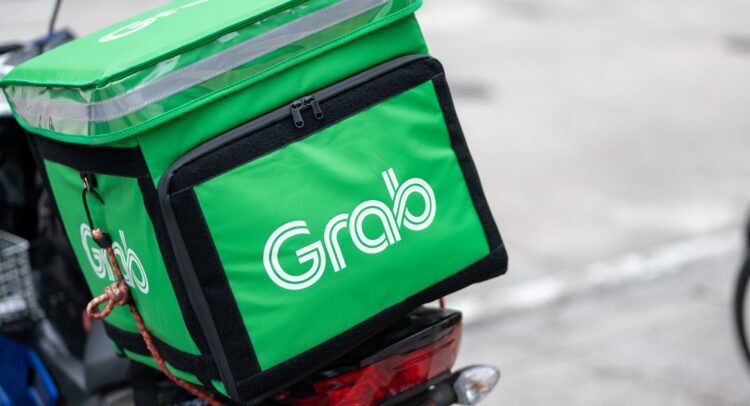Ride-hailing giant Uber Technologies (UBER) has gained nearly 175% since July 2022, so if you invested in it back then, congratulations. But what if you did not get in on that trade? Don’t worry, Uber’s Asian cousin, Grab (GRAB), might be the potential multibagger (a stock that multiplies in value several times over) you’re looking for.
Discover the Best Stocks and Maximize Your Portfolio:
- See what stocks are receiving strong buy ratings from top-rated analysts.
- Filter, analyze, and streamline your search for investment opportunities with TipRanks’ Stock Screener.
Grab is a Singapore-based company that offers delivery, mobility, and digital financial services in Southeast Asia through its “everyday everything app.” It’s one of the biggest names in Southeast Asia when it comes to ride-hailing and food delivery services and operates in eight major countries, including Malaysia, Indonesia, and Thailand.
Despite its poor stock performance, I am bullish on Grab because of its near-monopoly position in Southeast Asia, growing total addressable market (TAM), and potential to become profitable.

How Grab Developed a Near Monopoly Position
Grab has emerged as Southeast Asia’s leading super-app, and it’s not done yet. Most investors are not looking at the quiet moves the company is making. Grab is here to take share, even if it’s through buying small competitors. Since 2017, the company has acquired payment services platforms, grocery store chains, taxi operators, food review websites, and more.
Grab has completed about 10 acquisitions over the past eight years. One of the deals that did not fly under the radar of investors was back in 2018, when it acquired Uber’s Southeast Asian operations in exchange for a 27.5% stake in Grab.
In 2023, Grab signed a deal to acquire Singapore’s third-largest taxi operator, Trans-cab. But that deal didn’t go through and both parties withdrew from it after the Competition and Consumer Commission of Singapore said it would strengthen Grab’s already dominant position and result in a lessening of competition within the ride-hailing market.
Regulators are blocking its deals now because they acknowledge its near-monopoly position in a highly competitive market. This is why I’m not too worried about the competition Grab faces from rivals, including Delivery Hero’s (DLVHF) Foodpanda, Sea’s (SE) ShopeeFood and ShopeePay, GoTo’s GoJek, and the list goes on.
Regardless, Grab is not slowing down any time soon and will continue its M&A streak. About two weeks ago on July 23, it bought Singapore’s dining reservation platform Chope for an undisclosed price.
The competitive landscape in Southeast Asia, with both established players and new entrants, can lead to price wars. Consequently, Grab has been growing its market share by heavily incentivizing users, which has impacted its profitability. While it might have to continue doing that for some time, I’m confident in management’s ability to improve margins and become net income profitable over the next several quarters.
Grab’s Total Addressable Market Is Expanding
According to a Momentum Works report, the total gross merchandise value of Southeast Asia’s food delivery platforms grew by 5% year-over-year in 2023 to $17.1 billion. Grab has over 50% share of the food delivery market in key Southeast Asian (SEA) countries including Singapore, Malaysia, Indonesia, and the Philippines.
Similarly, Grab has the lion’s share of the mobility and ride-hailing market in SEA countries. A Measurable.AI report shows that Grab controls over 50% of the ride-hailing scene in Singapore and Indonesia and dwarfs competitors Gojek, ComfortDelGro, and Ryde.
Grab has a lot of untapped opportunities to cash in on. Consider the digital payments business it has. Though it’s burning cash right now, I believe it won’t stay unprofitable for long. According to the World Economic Forum, over 70% of the population in Southeast Asia is either underbanked or unbanked. Digital financial services are solving this problem, and online payments in the region are expected to cross $1 trillion by 2025 (as per estimates by Bain & Company).
Grab’s total addressable market is expanding, and there’s a lot of opportunity, considering its low market penetration rate. The company’s Monthly Transacting Users (MTUs) grew by 16% year over year in Q1 2024 to 38.5 million, and the population of Southeast Asia is about 685.75 million. Therefore, Grab’s market penetration rate is just 5.6%.
Grab and the Road to Profitability
Grab doesn’t have any real earnings yet, that’s what makes its valuation all the more tricky. But can it reach net income profitability? Grab’s earnings are due in a week, and analysts are expecting it to report revenue of $676.16 million. If Grab beats analysts’ revenue estimates, as it has over the past eight quarters, its revenue will grow by at least 19% year-over-year. Its growth is slowing down, but that’s what happens when a business starts maturing.
In Q1 2024, Grab was again adjusted-EBITDA profitable and posted a record-high figure of $62 million. Its net loss shrunk to $104 million, down 57% year-over-year from a loss of $244 million in Q1 2023.
Grab shrunk its regional corporate costs by 20% and cut operating expenses in its GrabFin division by 15% year-over-year in Q1 2024. The company’s margins are also improving. Grab’s Deliveries segment’s EBITDA margin improved to 1.6%, while its Mobility segment’s margins improved to 8.9%.
Management’s long-term margin targets are 4%+ for the Deliveries segment and 9%+ for the Mobility segment. For the Payment Services business, the company expects to reach a break-even point by the second half of 2026.
Management is guiding to $250 million to $270 million in adjusted EBITDA (prior range was $180 million-$200 million). Let’s see if we get a raise again when it posts Q2 earnings after a week.
As management continues cutting costs and improving margins, Grab can reach net income profitability and positive free cash flow in the upcoming quarters. I don’t see Grab not being able to fund its growth for some time, given the $2.1 billion of cash and cash equivalents it had as of March 31.
Grab’s Valuation
Grab has grown its revenue at a compound annual growth rate of 57% over the past three years. Additionally, analysts expect its sales to grow by 17.5% this year and 17% in 2025.
If Grab continues compounding at mid-teens over the next several years, it may not be too expensive while it trades at 4.6 times this year’s expected sales.
Is GRAB Stock a Buy, According to Analysts?
GRAB stock has a consensus Strong Buy rating based on 12 unanimous Buy ratings. The average GRAB stock price target of $4.67 implies an upside of 47.3% from current levels.

The Takeaway
Grab has a near-monopoly position in an emerging market that’s experiencing robust economic growth. However, it needs to improve its margins and translate its large market share into real earnings. If that happens, GRAB stock can be a true multibagger.









